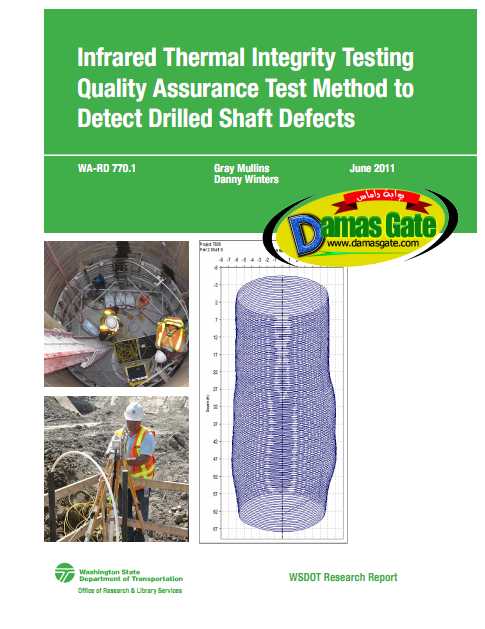Infrared Thermal Integrity Testing Quality Assurance Test Method to Detect Drilled Shaft Defects

1.1 Background Drilled shafts are large diameter, cast-in-place, deep foundation concrete elements that as a result of their construction processes are vulnerable to anomaly formation. Therein, blind concrete placement beneath the water table (wet construction) makes it difficult to inspect and/or verify a contiguous and intact concrete element. Until recently, no method could assure that a shaft was truly constructed as expected. Three primary issues arise pertaining to the effects of shaft defects: (1) reduced structural capacity, (2) reduced geotechnical capacity, and (3) compromised long-term durability. Each of these is discussed in depth with a quick overview of the applicability of a new shaft integrity verification method.
. Structural Effects. The AASHTO code specified capacities for concrete elements in flexure and compression are identical for structures both above and below ground regardless of construction methodology. The presumption is that sufficient quality assurance and inspection is exercised. The most commonly accepted form of Q/A is concrete break strength, slump, and above ground cage dimensions/verification (e.g. clear spacing, splice lengths, cage diameter, auger/tool diameter, etc.). In reality, concrete cylinders prepared straight from the truck are an optimistic look into the strength of the shaft throughout. Further, the actual shape of the shaft and quality of the concrete goes unknown. Figure 1-1 shows the result of a shaft load tested and that failed at 30% of the laboratory strength value
Download
http://s18.alxa.net/s18/srvs2/01/Inf...ft.Defects.rar